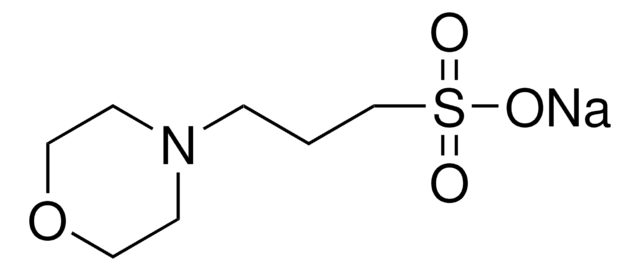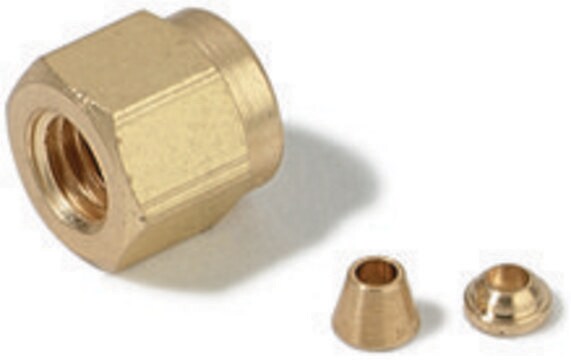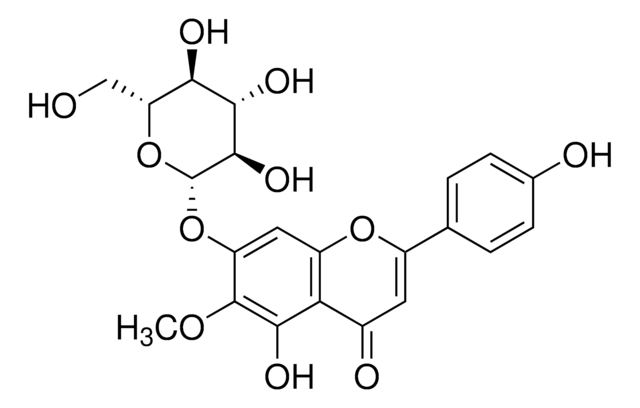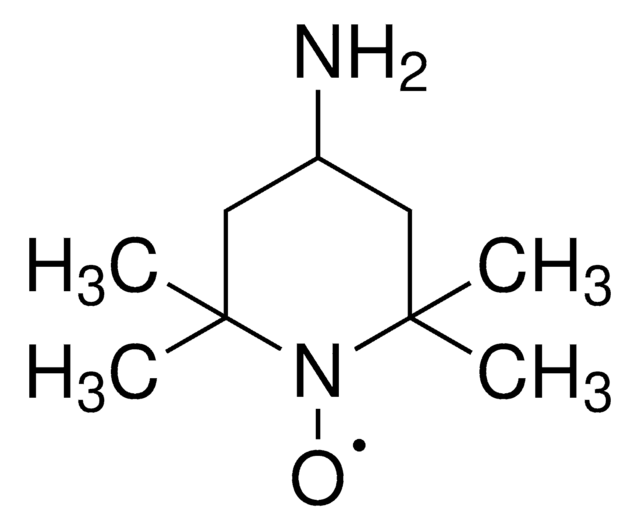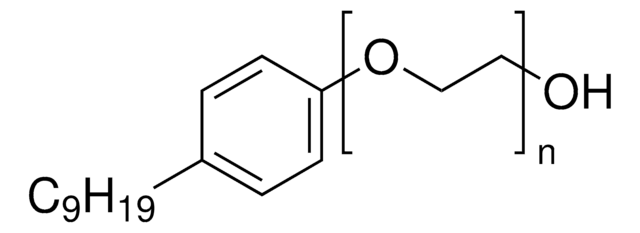推荐产品
化驗
≥98% (HPLC)
形狀
powder
顏色
white to beige
溶解度
DMSO: 2 mg/mL, clear
儲存溫度
2-8°C
SMILES 字串
FC(F)(F)C(OC(=O)N1CCC(CC1)C(O)(c4cc5c(cc4)OCO5)c2cc3c(cc2)OCO3)C(F)(F)F
InChI
1S/C24H21F6NO7/c25-23(26,27)20(24(28,29)30)38-21(32)31-7-5-13(6-8-31)22(33,14-1-3-16-18(9-14)36-11-34-16)15-2-4-17-19(10-15)37-12-35-17/h1-4,9-10,13,20,33H,5-8,11-12H2
InChI 密鑰
SXHQLPHDBLTFPM-UHFFFAOYSA-N
生化/生理作用
KML29, an O-hexafluoroisopropyl (HFIP) carbamate analogue of JZL184. is a potent and orally active monoacylglycerol lipase (monoglyceride lipase; MAGL; MGLL; MGL) inhibitor (IC50 = 5.9/15/43 nM against human/mouse/rat MAGL) that targets MAGL active site with greatly improved selectivity (rat/mouse ABHD6 IC50 = 1.60/4.87; no inhibitory activity against human/rat/mouse fatty acid amide hydrolase (FAAH) up to 50 μM). KML29 in vivo treatment results in a selective upregulation of 2-arachidonoyl glycerol (2-AG), but not N-arachidonoyl-ethanolamine (AEA) in mice (brain Emax ∼20 mg/kg p.o. or i.p.; peripheral Emax ∼1 mg/kg p.o.) and rats (brain Emax ∼40 mg/kg i.p.). KML29 reduces inflammatory and neuropathic nociceptive behaviour in animal studies without cannabimimetic side effects seen with dual FAAH & MAGL inhibition, chronic administration, however, leads to CB1 receptor desensitization as observed with other MAGL inhibitors.
Orally active, potent and highly selective monoacylglycerol lipase (MAGL) inhibitor with in vivo analgesic efficacy without cannabimimetic side effects.
儲存類別代碼
11 - Combustible Solids
水污染物質分類(WGK)
WGK 3
閃點(°F)
Not applicable
閃點(°C)
Not applicable
Sally Miller et al.
Investigative ophthalmology & visual science, 57(7), 3287-3296 (2016-06-23)
Cannabinoids, such as Δ9-THC, act through an endogenous signaling system in the vertebrate eye that reduces IOP via CB1 receptors. Endogenous cannabinoid (eCB) ligand, 2-arachidonoyl glycerol (2-AG), likewise activates CB1 and is metabolized by monoacylglycerol lipase (MAGL). We investigated ocular
Noemi Pasquarelli et al.
Neurochemistry international, 110, 14-24 (2017-08-23)
The modulation of the brain endocannabinoid system has been identified as an option to treat neurodegenerative diseases including Parkinson's disease (PD). Especially the elevation of endocannabinoid levels by inhibition of hydrolytic degradation represents a valuable approach. To evaluate whether monoacylglycerol
Noemi Pasquarelli et al.
Neuropharmacology, 124, 157-169 (2017-04-05)
Amyotrophic lateral sclerosis (ALS) is a fatal neurodegenerative disease of the motor neuron system with limited therapeutic options. While an increasing number of ALS patients can be linked to a small number of autosomal-dominantly inherited cases, most cases are termed
Maria Morena et al.
Neuropharmacology, 111, 59-69 (2016-08-25)
Systemic activation of cannabinoid receptors often induces biphasic effects on emotional memory and anxiety depending on the levels of emotional arousal associated to the experimental context. The basolateral nucleus of the amygdala (BLA) represents a crucial structure for the ability
Jae Won Chang et al.
Chemistry & biology, 19(5), 579-588 (2012-05-01)
The endocannabinoids 2-arachidonoyl glycerol (2-AG) and N-arachidonoyl ethanolamine (anandamide) are principally degraded by monoacylglycerol lipase (MAGL) and fatty acid amide hydrolase (FAAH), respectively. The recent discovery of O-aryl carbamates such as JZL184 as selective MAGL inhibitors has enabled functional investigation
我们的科学家团队拥有各种研究领域经验,包括生命科学、材料科学、化学合成、色谱、分析及许多其他领域.
联系技术服务部门